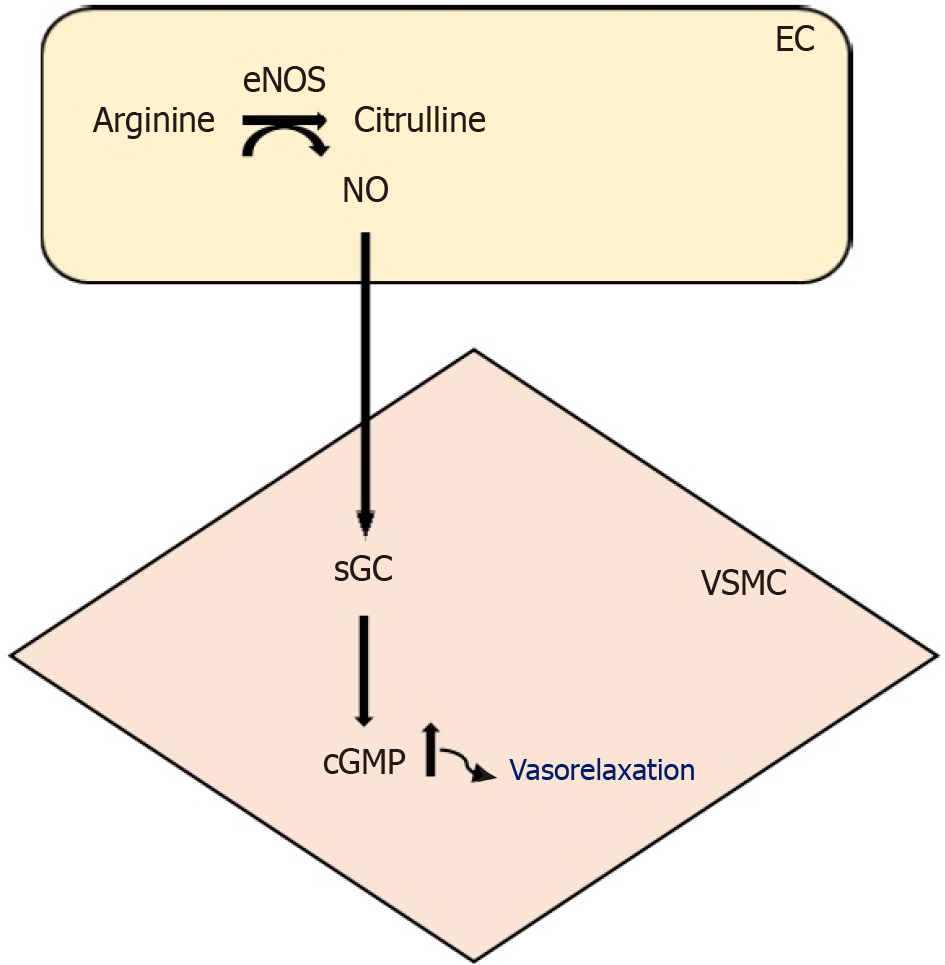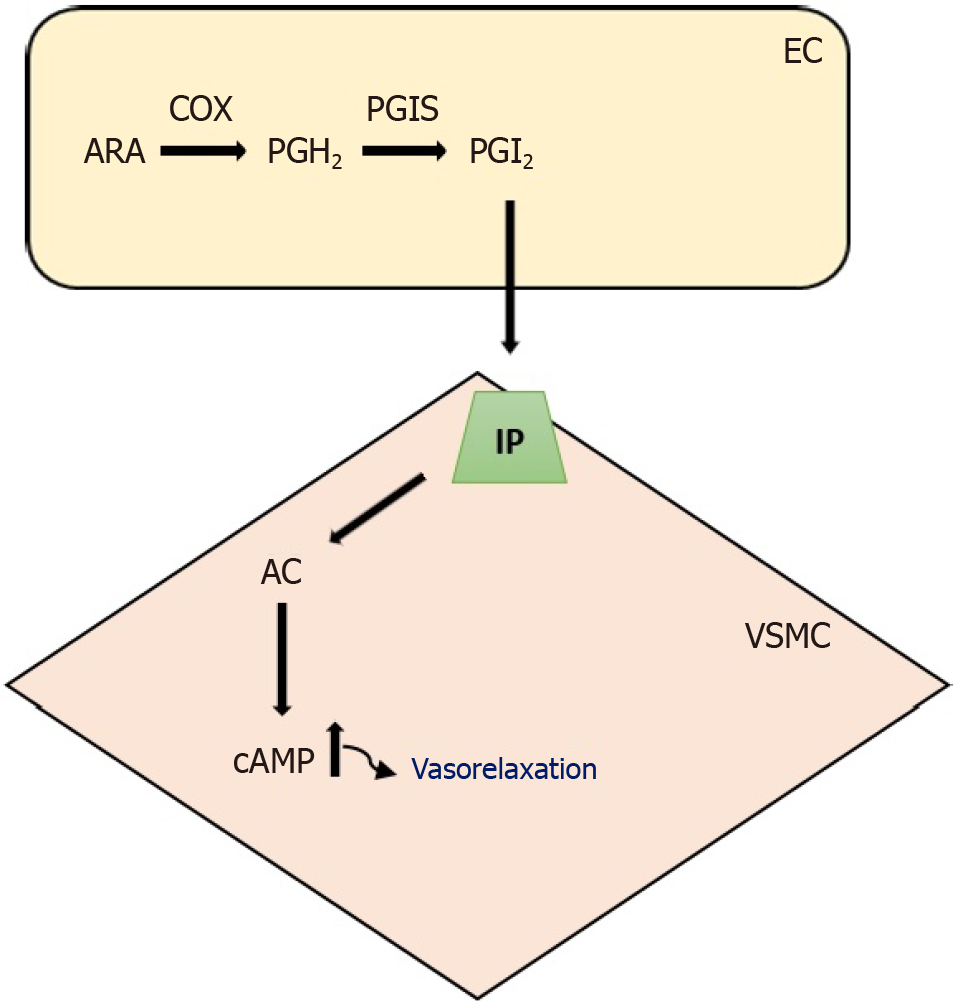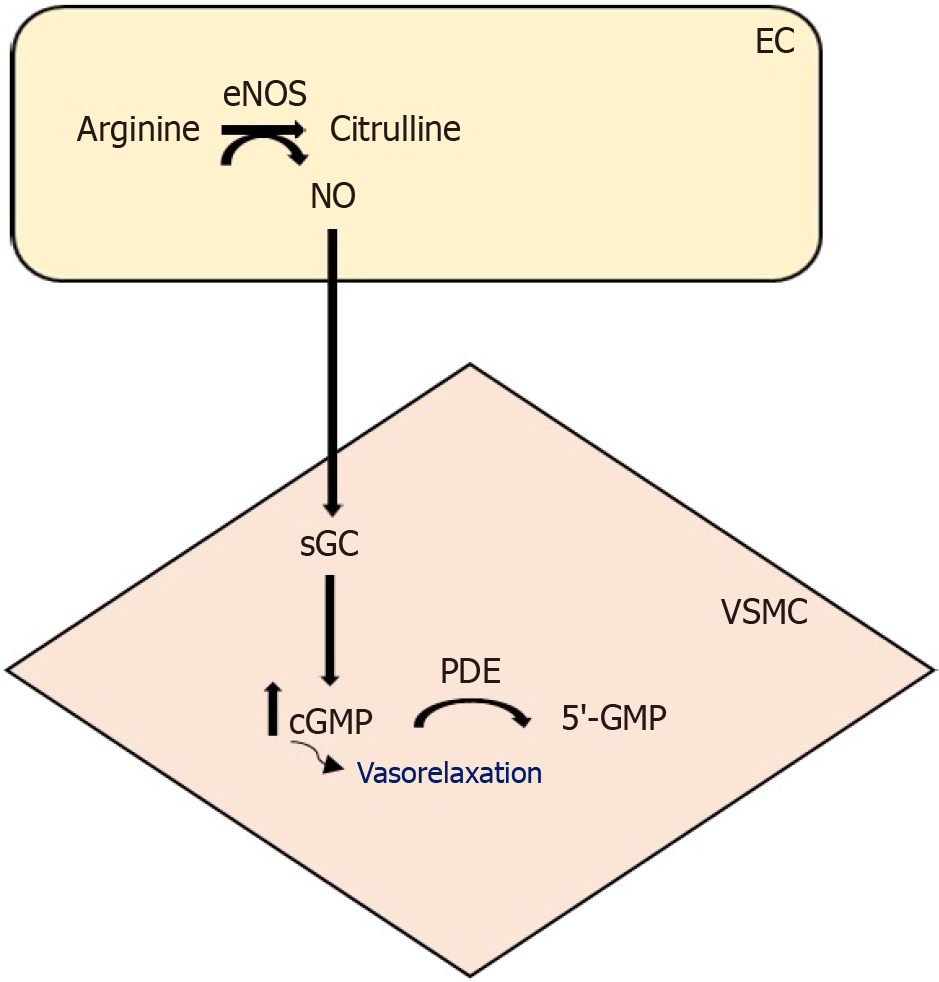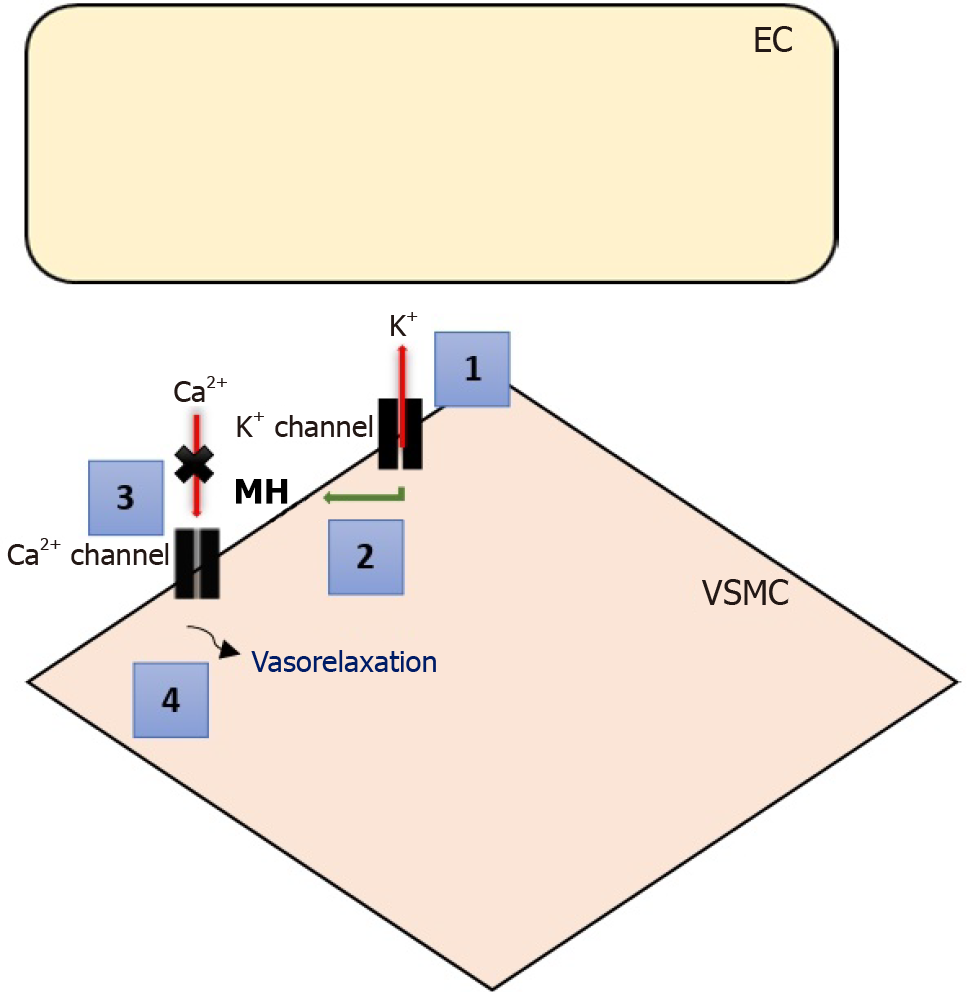Copyright
©The Author(s) 2024.
World J Diabetes. Jun 15, 2024; 15(6): 1122-1141
Published online Jun 15, 2024. doi: 10.4239/wjd.v15.i6.1122
Published online Jun 15, 2024. doi: 10.4239/wjd.v15.i6.1122
Figure 1 Vasorelaxation effect of nitric oxide-cyclic guanosine monophosphate pathway.
cGMP: Cyclic guanosine monophosphate; EC: Endothelial cell; eNOS: Endothelial nitric oxide synthase; NO: Nitric oxide; sGC: Soluble guanylate cyclase; VSMC: Vascular smooth muscle cell.
Figure 2 Vasorelaxation effect of PGI2-cyclic adenosine monophosphate pathway.
AC: Adenylyl cyclase; ARA: Arachidonic acid; cAMP: Cyclic adenosine monophosphate; COX: Cyclooxygenase; EC: Endothelial cell; PGI2: Prostacyclin; IP: Prostacyclin receptor; PGIS: Prostacyclin synthase; PGH2: Prostaglandin H2; VSMC: Vascular smooth muscle cell.
Figure 3 Vasorelaxation effect of phosphodiesterases inhibition.
cGMP: Cyclic guanosine monophosphate; EC: Endothelial cell; eNOS: Endothelial nitric oxide synthase; 5’-GMP: 5’-Guanylic acid; NO: Nitric oxide; PDE: Phosphodiesterase; sGC: Soluble guanylate cyclase; VSMC: Vascular smooth muscle cell.
Figure 4 Vasorelaxation effect of opening K+ ion channels/reduction of Ca2+ levels in the cell.
EC: Endothelial cell; MH: Membrane hyperpolarization; VSMC: Vascular smooth muscle cell.
- Citation: Demirel S. Vasorelaxant effects of biochemical constituents of various medicinal plants and their benefits in diabetes. World J Diabetes 2024; 15(6): 1122-1141
- URL: https://www.wjgnet.com/1948-9358/full/v15/i6/1122.htm
- DOI: https://dx.doi.org/10.4239/wjd.v15.i6.1122
















